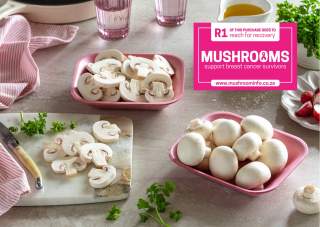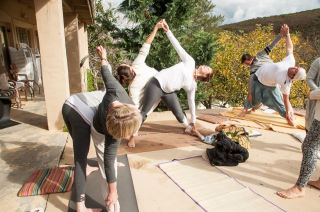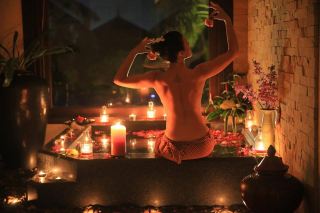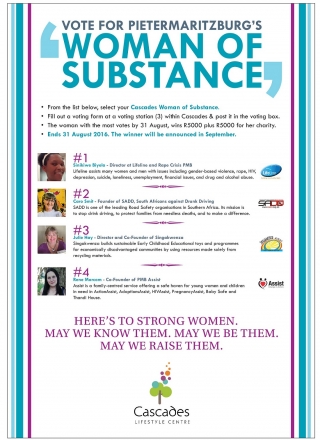Real Time Heroes to Breast Cancer Survivors
The tireless work of South African non-profit organisation Reach for Recovery (R4R) is funded each year by the Power of Pink campaign, a South African Mushroom Farmers’ Association’s (SAMFA) initiative. R1 from every pink punnet of fresh mushrooms sold nationally at Pick n Pay stores during October is donated to R4R’s Ditto Project. The sole objective of this very special project is to provide free silicone prostheses to breast cancer survivors who cannot afford reconstruction after the life altering and heartbreaking reality of a mastectomy.
Launched in 2011, the Power of Pink campaign has resulted in just under 8000 silicone prostheses provided to financially strapped breast cancer survivors at a cost of more than R5,5 million. “To our astonishment,” exclaims Stephné Jacobs, Reach for Recovery’s National Chairperson, “2020 saw the highest amount raised since the campaign’s inception. Big hearted South Africans contributed just under R700 000.00 despite their own financial hardships brought on by a year of lockdowns and job cuts. We and the Ditto Project recipients have been truly humbled by this generosity.”
“We couldn’t be prouder of our association with Reach for Recovery’s Ditto Project,” adds SAMFA Chairperson, Ross Richardson. “The dedication of every R4R volunteer – a breast cancer survivor herself – and the immense kindness of all South Africans who support the campaign is such restorative testimony to the goodness that lives in people.”
“Courage is grace under pressure,” said Ernest Hemingway in a 1929 interview with poet Dorothy Parker for The New Yorker magazine. He, of course, was right. Over these difficult Covid-19 years, it’s a mantra that has fuelled and furthered R4R’s most delicate of work, performed out of the public eye. “Lockdown regulations and the vulnerable health of breast cancer survivors in need brought about new challenges for R4R and our Ditto Project,” explains Stephné. “But being survivors ourselves, we realised very quickly that we could and must continue with our services in other ways! As we have done for 53 years, we continued our work with the assistance of advanced technology.
Our organisation’s Peer Support Services passionately offered ongoing much needed support via telephone, WhatsApp, and video conferencing. I am proud to be able to say that we were able to comfort women who not only went through mastectomies but who would also have had to live through the dreadful experience in complete isolation if we were not at the other end for them!”
Whilst fresh mushrooms and breast cancer have a strong humanitarian connection in South Africa, there is another scientific link between fresh mushrooms and the fight against breast cancer. In 2010, the Beckman Institute at the City of Hope Cancer Centre in California found that eating just 10g of mushrooms a day more than halved people’s risk of developing breast cancer.
That’s means eating just one fresh mushroom a day, a staggeringly easy step in self-care to avoid the ravages of such a terrible disease. So, in 2021 let’s once again take courage together, for each of our own health and the restoration of breast cancer survivors. Let’s once again purchase fresh mushrooms in pink punnets at Pick n Pay stores from September 20 this year in an extended Power of Pink campaigns that will run until the end of October.
For more information, please contact Gina McLoughlin on This email address is being protected from spambots. You need JavaScript enabled to view it. or 0824137538.
Alternatively go to SAMFA’s website: www.mushroominfo.co.za
Yoga Teacher Training Course 2020
COURSE INFORMATION
Modules 1 & 2 are open to anyone wishing to deepen their understanding of yoga.All three modules are required if you were to register for the 200hr Yoga Teacher Training Certificate.
MODULE 1 – IMMERSION
A stand-alone module for those who either want to train and certify as a yoga teacher or for those who wish to deeply immerse themselves in yoga philosophy.
For ISHTA YTT Certification (to become a yoga teacher) you need to have done this module. Or it can be done as a stand-alone module for those with a desire to learn more about yoga, and its ancient wisdom.
Module 1 Will Include:
Friday Introduction & Welcome + Opening Ritual (1st May 2020)
Weekend 1 (2 - 3 May)Yoga Philosophy – history, origins, ancient texts, the eight limbs
Weekend 2 (9 - 10 May)Meditation & the Mind – Pranayama 101
Weekend 3 (16 - 17 May) Ayurveda & Yogic Lifestyle
Venue: Life Retreat Studio, Lourensford Estate
MODULE 2: IMMERSION
A stand-alone module for those who either want to train and certify as a yoga teacher or for those who wish to deeply immerse in yoga philosophy.
For ISHTA YTT Certification (to become a yoga teacher) you need to have done this module – or it can be done as a stand-alone module, for those with a desire to learn more about yoga, and its ancient wisdom.
Module 2 Will Include:
Weekend 1 (6 - 7 June): Energetic Anatomy as taught within the ISHTA system (including the chakras, mantras, sound, colour) – Pranayama 102
Weekend 2 (13 - 14 June): Anatomy, Asana & Alignment
Weekend 3 (20 - 21 June): Physiology & Asana (physical & energetic)
Weekend 4: Optional Catch Up Weekend (Date to be confirmed)
Venue: Life Retreat Studio, Lourensford Estate
MODULE 3: YOGA TEACHER TRAINING CERTIFICATION
This is only open to those wanting to certify as an Internationally Registered Yoga Teacher at the 200hr level. It is the ‘crowning-jewel’ of the accumulated training.On this 7-day intensive retreat, you will immerse yourself in yoga, which teaches conscious living… on all levels. Surroundings will be natural to best support this process. Experience an ashram lifestyle (from pre-sunrise spiritual practice, to end of day closing ritual) so as better to understand & progress along the yogic path.This period includes theory, practice, and development of your unique teaching toolkit (in preparation for certifying practical assessments & theory exam).Module 3 Will Include:Teaching style, creating & holding space, hands-on adjustments, building confidence in yourself & your students, class structure & sequencing, ethics, setting yourself up as a professional Yoga Teacher.Retreat: Dates to be confirmed[Time needed to take off from work will be 5 working days, and a weekend]
Ayurveda Night Time Tips for Good Sleep
Winter is a great time of the year to get ourselves back into nurturing habits for bedtime.
Join Trish & Ryan as we delve into ancient ayurvedic practices for deep, healing sleep time routines for the entire family!
AYURVEDA is the age-old "Science of Life":
♥ Detox from technology♥ Soothing bedtime teas
♥ Bathtime practices for warming the body and cleansing the skin naturally
♥ Great ideas for essential oil blends
♥ Bring the sacredness back into the home, family, and heart
Date: 29 July 2018
Time: 10:30 - 13:00
Cost: R 450 (Receive a gift & PDF notes)
BOOK TICKETS NOW: This email address is being protected from spambots. You need JavaScript enabled to view it.
** BRING THE SACRED BACK INTO NIGHTTIME ROUTINES**
Water Temperature and Your Body
Living in a healthy manner is a subjective subject. Health can be defined as various expressions by different individuals. As such, we explore something less subjective – the impact of water temperature on the body.
Cold Water
More often consumed on when one is hot or thirsty – cold water is a great way to thermoregulate the body when there is excess heat generated. The most common time this occurs is when during warmer days or when there is exercise involved. The cold water also serves to replenish fluids lost to perspiration.
On the note of cold water, it is more effective to consume chilled water rather than ice cold water as your body would need to normalise the temperature for use. Chilled water still goes through normalisation processes but at the same time serves to cool the body down. In the case of ice cold water, it serves to shock the system and cause cramping. This normalisation process actually burns calories and as such can help boost your metabolism. The taste of cold water is also more palatable to those beginning their path to the recommended daily intake of water – being roughly 8 cups.
Room Temperature Water
Room Temperature (or ambient) Water is beneficial for digestion. Warm water assists in flushing our hardened minerals and fats that do not serve the body positively. In this flushing process it also serves to ensure regular bowel movements. As room temperature water is easier for the body to process through its lack of need for thermoregulation for the body – it can help with relaxation of body parts and function processes in the body. An example of this is that of relaxation of blood vessels affording better blood circulation.
Room temperature water is also the temperature of choice for singers and voice actors as it serves to relax and warm the vocal chords.
Hot and Warm Water
Conversely to cold water, ambient water can help negate and even subdue cramping by regulating body temperature. Studies show that the introduction of heat to the body – internal or external (as with a hot water bottle) – pain receptors get deactivated in favour of the heat receptors.
Warm water also offers the benefit of assisting during a detox. As the aim of a detox is to remove toxins in the body, the warm water helps to promote perspiration – stimulating the removal of toxins from the body. Toxins get removed through sweat and which is in turn replaced with warm water.
If you want to ensure you and your local environment stay hydrated – be it with cold, ambient or warm water - contact us on 021 813 6631 or alternatively email us at This email address is being protected from spambots. You need JavaScript enabled to view it..
Algoa FM recognised for its contribution towards Eastern Cape health
Algoa FM has received an award for the support it provides to promoting health in the Eastern Cape.
The Livingstone Tertiary Hospital Service Excellence Award presented on Thursday, November 23 by Eastern Cape health MEC Dr Pumza Dyantyi to Algoa FM managing director Dave Tiltmann was in recognition of the impact of the annual Algoa FM Big Walk for Cancer.The walk is the biggest mass family participation event in the Eastern Cape, and one of the oldest.
The Livingstone Tertiary Hospital Service Excellence Award serves to recognise employees and organisations that make meaningful contributions towards health in the Eastern Cape.“We are deeply honored to receive recognition for the many years of service that we have delivered to the Eastern Cape Department of Health with the Big Walk for Cancer,” says Tiltmann.“
"A highlight of our association with the MEC Dr Dyantyi and her department for the past three years is certainly receiving this certificate of recognition.”
Meet the samurais’ secret stressbuster... Ikebana, the Japanese art of flower arranging By Ambassador Shigeyuki Hiroki – Embassy of Japan SA
Hollywood films and Western historical novels tend to depict only the warlike confrontations that marked the centuries when the samurai flourished – but at the heart of this time of social and political upheaval, there resonate a practice and a message that could enhance our stress-driven lives in the 21st century.
This is the ancient Japanese art of ikebana, a minimal and meditative form of flower arranging developed in Japan but today practised by enthusiasts across the world. Recently, Australian Vogue even pinpointed ikebana as the hot new trend for wedding flowers and bouquets, noting: “The world of florals is taking a breather . . . think simplicity, elegance, understatement.
The perfect antidote to fussy arrangements for the laid-back bride.”That might sound rather remote from the samurai, the elite warriors of pre-modern Japan who, by the early 17th century after Japan reunited, had transformed into its highest social class. As the Japanese economy developed and flourished, so did culture.
Theatre forms such as kabuki became very popular and ikebana spread out of the Buddhist monasteries and aristocracy to be taken up as a fashionable and fulfilling leisure art. It was practised by samurai, wealthy merchants and others, both men and women.Like us, they sought out a still, quiet centre in life.
They found it in creating and contemplating ikebana. This was an extension of the Buddhist custom of making floral offerings, kuge. The creativity and focus needed for ikebana is seen as a form of meditation, just as the Japanese martial arts emerge from a core of mental focus.
Ikebana arrangements are appreciated for their intrinsic beauty and the artistry of their design rather than being competitive. In that, it could be likened to the contemporary trend for colouring-in that has swept the world, giving access to the joy of colour, shape and texture while drawing the mind and the creative spirit into the “zone”.
In ikebana’s use of natural materials and allusions to natural shapes and settings, it aims to focus the mind on the passage of the seasons, time and change. Similar yearnings in our busy, urban lives today prompted Pantone to name “Greenery” its 2017 colour of the year. Greenery can help make our urban interiors and natural exteriors one again, balancing spirituality, banishing anxiety and so making us more effective.
This embracing attitude to plants was captured in ikebana, which uses freshly cut branches, vines, leaves, grasses, berries and fruit as well as flowers. In fact, it showcases plants at every stage, from seeds to wilted and dried plants. These are complemented by glass, metal or plastic containers – their size, shape, texture, volume and colour are also key decisions for the ikebana practitioner.
Ikebana then was part status symbol, part a symbolic language of flowers. Understanding the symbolism is like a code to appreciating the layers of spiritual and aesthetic meaning in ikebana. Even the placement of ikebana in a room or the occasion it marks are important factors reflected in homes throughout Japan.
In early March each year, for example, the Doll Festival, or Girls’ Festival, means that flowering peach branches are decorated with traditional dolls. Boys have their turn in May when Japanese irises are used to symbolise male strength.Bamboo features in decorations for the Star Festival in July, while September’s autumn moon is welcomed with ikebana displays of seasonal Japanese pampas grass.
Good wishes for the New Year are conveyed by using plants such as evergreen pine, symbolising eternity, and flowering apricot branches for venerable old age.Over the centuries since it was first developed, ikebana has developed several approaches or schools. There are three main ones today: ikenobo, ohara and sogetsu.The largest and oldest is ikenobo, based on the rikka (standing) techniques used by Buddhist monks in the 17th century.
This traditionally used tall bronze vases, with a carefully selected branch arching centrally through the arrangement and symbolising heaven or truth. Other branches were arranged around this for both decorative and symbolic purposes. Alongside this, the contrasting nageire developed, a very different style that evoked spontaneity in its name – meaning to “throw in” – but in fact used just one or two flowers or branches very subtly and simply to depict natural beauty.
Instead of tall vases, ohara, founded in the late 19th century, uses wide, shallow containers to allow the flowers to appear artfully strewn in moribana – literally “piled up”. The surface of the water itself becomes part of the landscape evoked by the arrangement. Sogetsu, founded in the 1920s, made this naturalistic approach more freeform and creative and newer schools have added more avant garde and abstract approaches.
Each of the three main schools has more than a million practising members in Japan alone, the most devoted striving to reach the rank of master. As ikebana now transcends cultural boundaries, Ikebana International was founded in Tokyo six decades ago. Today the ikebana motto is “Friendship through Flowers” as it has become a global decorative art with a heritage of half a millennium of practice. Ikebana followers in South Africa benefit from workshops by visiting Japanese masters, including special presentations arranged by the Embassy of Japan in Pretoria. These usually occur once a year.
To join the mailing list, contact: Cultural Division of the Embassy of Japan on This email address is being protected from spambots. You need JavaScript enabled to view it.
Vote for your ‘Cascades Woman of Substance’ at Cascades Centre throughout August
KWAZULU-NATAL, PIETERMARITZBURG, 10th August 2016 – Launching on Friday, the 12th of August and running throughout the month of August at the Cascades Lifestyle Centre is the Cascades Women of Substance campaign. Cascades Lifestyle Centre has selected four Pietermaritzburg women-led charities doing substantial work for women in the community, and ask Cascades residents and shoppers to vote for the woman they would like to see win. The woman with the most votes received by the end of August, will win R5 000 plus another R5 000 donated to the charity they head up. Voting can only be done at the three dedicated voting stations located throughout the Cascades Lifestyle Centre from Friday, 12th August 2016.
At each voting station there will be a pad of voting slips. Tick your favourite, add your name and signature and pop it into the box. Says Michelle Chinnu, Property Manager at Ducatus, mastermind of this campaign, “August is about honouring hero-women and what better way to do this than highlight some of the extraordinary work being done by ordinary women in our Pietermaritzburg community. We hope that the prize money will go some way into helping them help more women in need, plus a little gift from us to say thank you.” The four women selected are Sinikiwe Biyela (Lifeline PMB and Rape Crisis), Caro Smit (SADD - South Africans against Drunk Driving), Rene Morcom (Assist, Thandi House), and Julie Hay (Singakwenza) Sinikiwe Biyela is the Director at Lifeline PMB and Rape Crisis.
This organisation promotes emotional wellness for individuals and communities and offers a 24/7 helpline. Biyela has extensive experience aimed at preventing HIV infection, and in assisting women in their recovery from traumatic experiences. She was a finalist in the Shoprite Checkers Women of the Year Awards in 2012 for her GBV work, and in 2014, was a finalist in Africa’s Most Influential Women in Business and Government. Says Biyela, “We are extremely grateful to have the Cascades Centre promote the services available to women in Pietermaritzburg, and look forward to this campaign raising awareness.” Caro Smit launched SADD - South Africans against Drunk Driving - after her 23 year old son, Chas, was killed by a drunk driver. Smit believes that the best way to get over adversity is to help others. Smit says “You can help yourself overcome adversity, plus make a difference to others, by getting involved with one of many charities, or if there is not a suitable charity available - get one started!” Today, SADD supports many victims and families after drink-driving crashes and offers advice for court.
Rene Morcom is co-founder of Thandi House, Assist PMB’s flagship project. It a family-centred home caring for sick, orphaned, abandoned, abused and disabled children of all ages. Morcom believes no matter what hardships women face, women have a strength that can see them through. “Look inside yourself and believe in your own potential,” she says. Julie Hay is co-founder of non-profit organisation, Singakwenza, which provides sustainable early childhood education in economically disadvantaged areas using resources made solely from recycling. Hay says, “Young children learn best when they are actively involved in play but the cost of educational toys is prohibitive to around 5.2 million children under the age of four. The only way we are going to change our education statistics is by improving access to early childhood development programmes.” To vote for your Woman of Substance, visit Cascades Shopping Centre from Friday 12th August and fill out a voting form found at one of the three voting stations located throughout the Centre. Campaign ends on Wednesday 31st August 2016.
Compiled by Hot Salsa Media on behalf of Cascades Lifestyle Centre For all press enquiries – email This email address is being protected from spambots. You need JavaScript enabled to view it.






